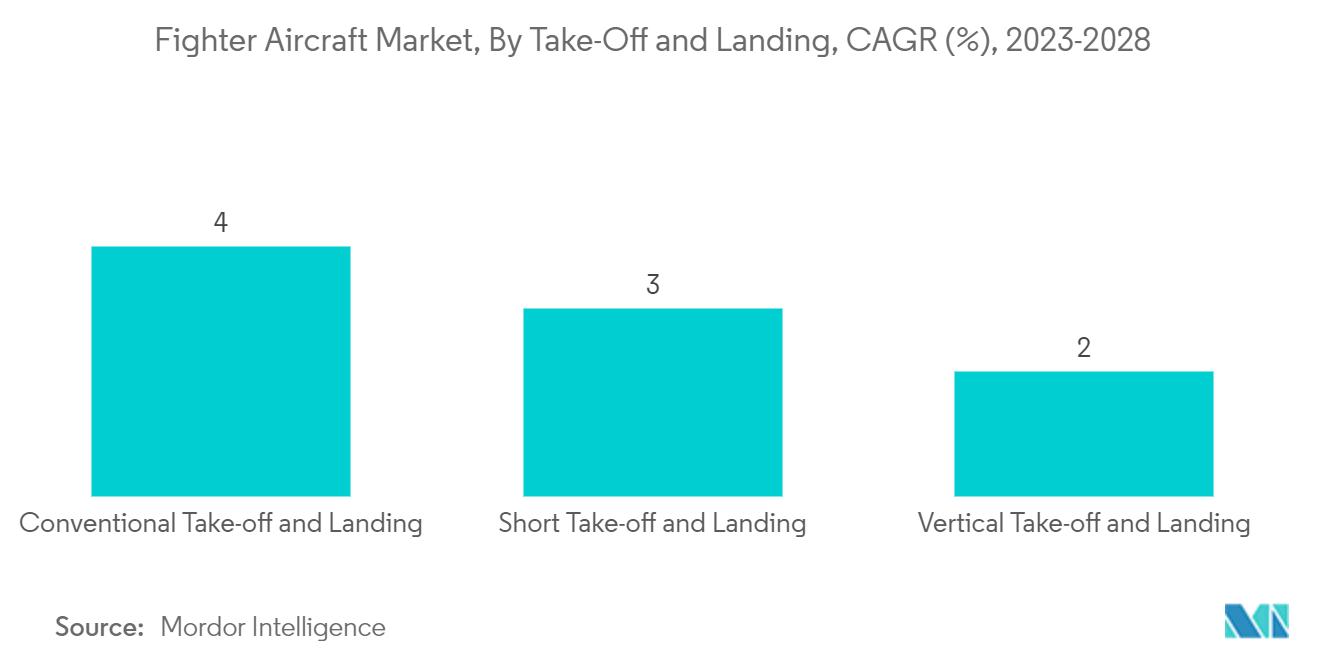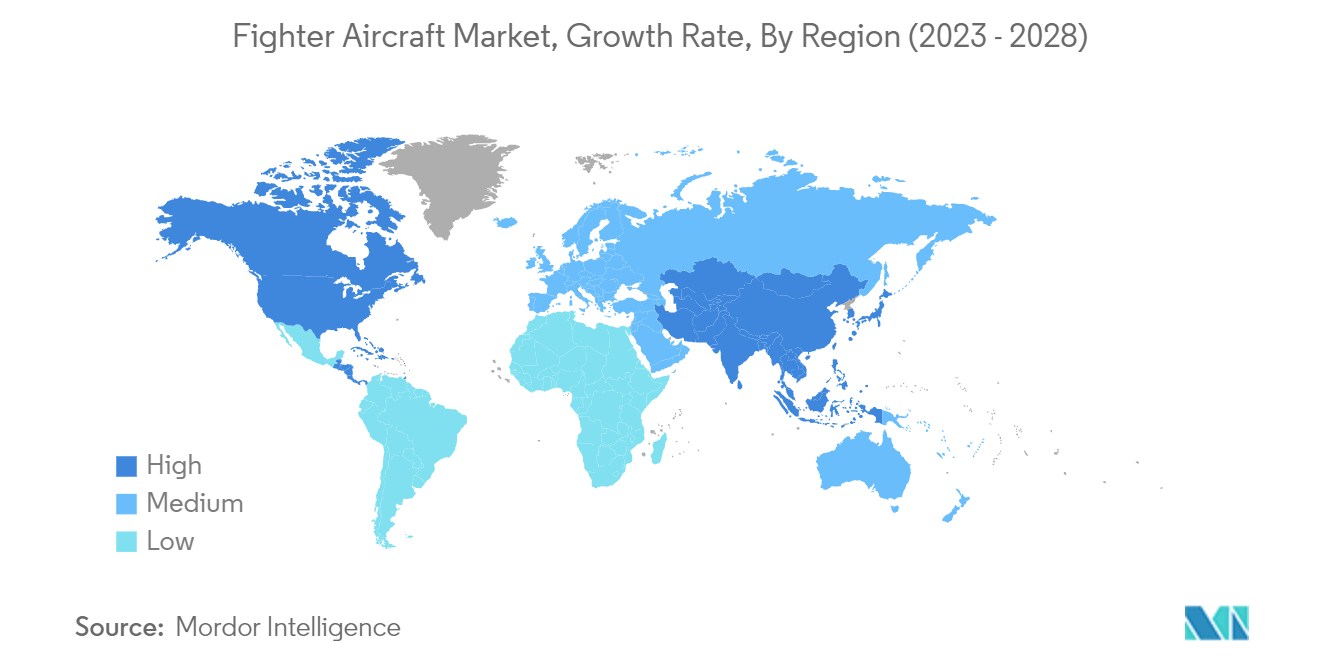Market Trends of Fighter Aircraft Industry
By Take-Off and Landing Segmentation, the Conventional Take-Off and Landing is Expected to Witness Significant Growth During the Forecast Period
- The conventional take-off and landing segment is expected to experience significant growth during the forecast period due to its ability to carry a higher payload capacity for weapons and equipment, as well as its greater battle range. This growth is anticipated to be fueled by the development of new fighter aircraft programs such as China's J-20, Su-37, Mig-35, Su57, and India's TejasMK2, which will replace aging fourth-generation fighter aircraft with 4.5th, 5th, and 6th generation aircraft.
- Additionally, countries are engaging in modernization programs such as the F-16, F-15, and F/A-18 to improve aircraft capabilities and life extension. Some prominent countries across the globe are also planning or have started procuring new fighter aircraft to address concerns about their aging military fleets.
- For example, in April 2022, the Brazilian air force ordered four Saab-Embraer F-39E jets in addition to the 36 purchased in 2014 as part of a USD 4.7 billion contract. The country is also considering ordering another batch of at least 30 F-39E fighters with a local designation of Gripen NG aircraft.
- Furthermore, with the rapid advancement of technology, countries are striving to enhance their aerial troop support capabilities by procuring next-generation transport aircraft. As a result, they are awarding contracts to aircraft manufacturing companies. For instance, in June 2021, Airbus reportedly secured a contract with an undisclosed nation in the Asia-Pacific region for its C-295 transport aircraft. These developments are expected to contribute to a positive outlook for conventional take-off and landing aircraft during the forecast period.

The Region of North America is Expected to Witness Significant Growth During the Forecast Period
The region of North America is expected to witness significant growth during the forecast period. The United States military expenditure increased by almost 2.9% in 2021 to reach USD 801 billion from USD 778.23 billion in 2020. The United States remained the largest defense-spending country in 2021 and represented 38% of global spending.
Moreover, the United States Air Force is gradually addressing its aging aircraft problem, as it takes delivery of newer generation jets. As inventories decreased, the average aircraft age increased over the past decade. The average age of the United States Air Force fleet is over 25 years, and bombers have an average age of over 50 years. Moreover, the United States Department of Defense is awarding contracts for fighter aircraft. For instance, in July 2022, The United States Department of Defense is committed to manufacturing around 375 F-35 fighter jets over a three-year period With Lockheed Martin Corp. Additionally, according to the Pentagon, the final number of aircraft covered by this agreement could change depending on any alterations made by the United States Congress to the budget for the Fiscal Year 2023 and any orders put in by foreign partners.
Apart from the fixed-wing transport aircraft, the United States armed forces are also modernizing its fleet of utility helicopters. The United States Navy plans to retire all its C-2 aircraft by 2024, as it has started taking deliveries of CMV-22B Osprey. Both the United States Navy and Marine Corps have placed orders for Ospreys in the past few years. Moreover, in June 2022, a contract of USD 2.27 billion has been awarded to Sikorsky Aircraft Corp., Stratford, by the United States department of defense for procurement of 120 H-60M Black Hawk helicopters and associated support for the fiscal years 2022-2026, with options for an additional 135 aircraft.
Thus, such developments will lead to the fighter aircraft witnessing significant increase during the forecast period.


